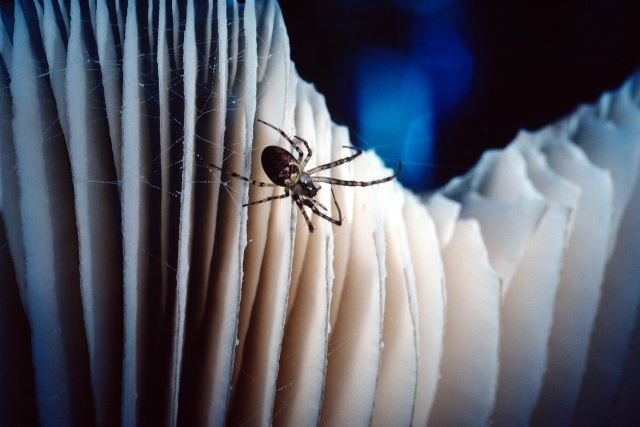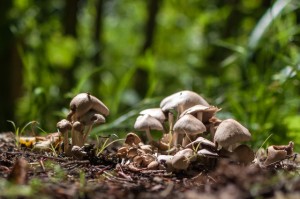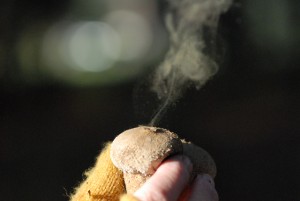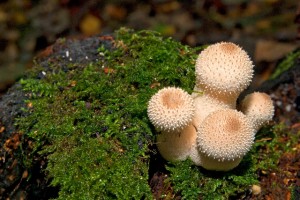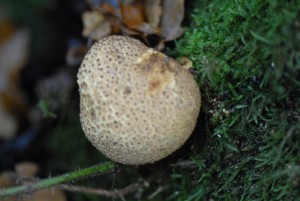There are over 15,000 different species of fungi in the UK and most go unseen. On the last count there were 84 varieties found on the Common.
Fungi are not plants, animals, nor bacteria.. They are decomposers and when an animal or plant dies, fungi feeds on them. In return they can help plants obtain water for survival. Fungi speed the process of decay with little odour while bacteria, the other cause of decay, can be very smelly.
Main pic: Trevor Payne for Woodland Trust More on the Woodland Trust here Woodland Trust
Common Ranger Andy Goddard picks out some species you are likely to see on the Common
* Sulphur Tufts are common. They start off yellow colour, go dark green and then brown and the stems are usually curved. They grow all over, often in large clusters especially on dead birchwood logs
* Puff balls are round and white and come in different sizes..when they dry out you can squeeze the ball and powder puffs out. They have no external gills and produce spores ( fungal equivalent of seeds) inside
* Fly Agaric mushrooms – (red with spots) you see mostly under the birch trees and in Larks Meadow (behind Black Horse), TOXIC
* Field and horse mushrooms grow on grass often along the roads and under trees. People see them easily so as soon as they come and get picked quickly,
* Experts use the colour of the spore to help identify fungi by cutting off the caps and shaking spores onto white paper
Odour is another clue – some smell inky, others like aniseed, creosote or sweet corn and some just smell foul .
WARNING It is hard even for experienced foragers to tell the difference between edible fungi and toxic varieties. “100% certainty is only just good enough.”
Herts and Beds Fungus Group Member Robin Brown fills us in on some fungi facts
Exploring the world of fungi can be great fun, especially using a microscope, as some of them are spectacular up close. A few tips though:
* Get yourself a book to help identify fungi. There are a number of good apps for phone/tablet too. (Mushroom id is one of the best)
* Always try to identify fungi without removing them. If you do need to take one, try not to rip it out of the ground.
* Use latex gloves to handle samples, some can be sticky.
* Take a close look, you’ll be amazed.
* Be 100% sure it is edible before cooking one, not 99% sure. There are plenty of look-a-likes that can make you quite sick.
We need to look after our Common and countryside so be sure to “take only photos, leave only footprints.”
Friends of the Common keep track of species by going out on a Fungus Foray in autumn in collaboration with the Herts and Beds Fungus Group
http://www.hertfordshirefungusgroup.org
Hertfordshire & Bedfordshire Fungus Group: a local fungi recording group affiliated to the British Mycological Society has about 30 members with a wide range of experience and skills, but who share a particular interest in fungi and foraying for fungi. A recording group essentially goes out to various locations around Herts and Beds and finds fungi, identifies and records it.
Photos from left to right:
Far left: Mushrooms: Jonathon Wretham; Puff ball: Simon Varnals; Gem studded puff balls: Robin Brown; Earth Ball : Simon Varnals

